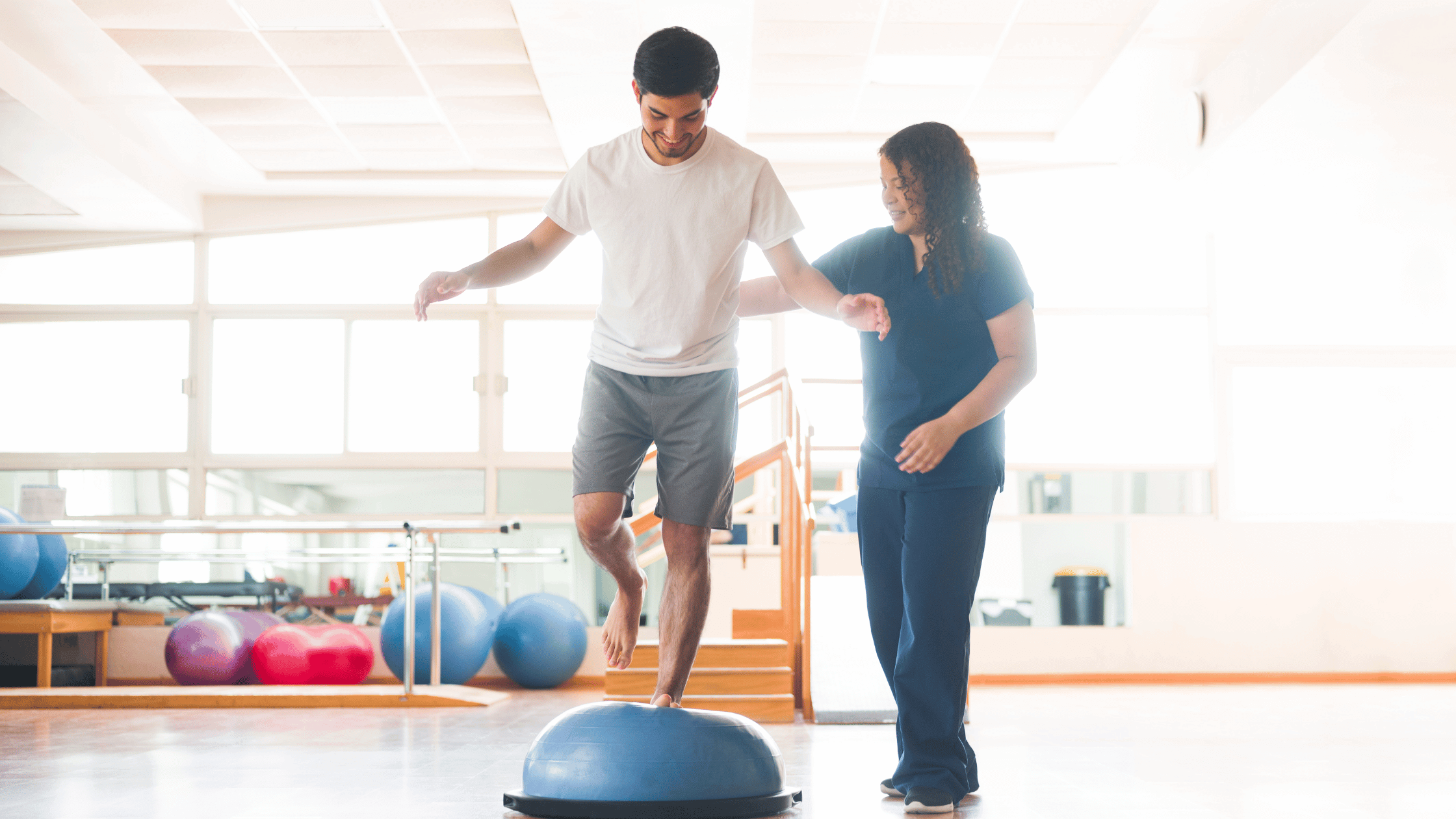Preparing for a Knee Replacement: The Role of Physical Therapy

Physical Therapist, PT, DPT // EW Motion Therapy Meadowbrook
Are you or a loved one considering knee replacement surgery? It's a significant step towards regaining mobility and reducing pain, but the journey starts before the surgery. Physical therapy is crucial in preparing your body for a knee replacement. In this article, we'll explore what physical therapy before a knee replacement involves and what a typical treatment plan looks like.
Understanding knee replacement surgery
Before diving into physical therapy, let's briefly understand what knee replacement surgery entails. Knee replacement, also known as knee arthroplasty, is a surgical procedure in which a damaged or arthritic knee joint is replaced with an artificial implant, known as a prosthesis. This procedure is often recommended for individuals with severe knee pain, limited mobility, or significant joint damage due to osteoarthritis or rheumatoid arthritis.

The role of preoperative physical therapy
Physical therapy before a knee replacement, often called prehabilitation or prehab, is critical to the entire knee replacement process. Its primary objectives are to:
- Improve strength and flexibility: Prehab helps strengthen the muscles around your knee joint and improve joint flexibility. This can make your post-surgery rehabilitation more effective.
- Enhance joint stability: By working on balance and proprioception (awareness of your body's position), physical therapy can help you stabilize your knee, reducing the risk of falls after surgery.
- Reduce pain and swelling: Preoperative exercises and techniques can help alleviate some pain and swelling associated with knee arthritis, making the waiting period before surgery more comfortable.
- Boost overall fitness: Prehab isn't just about the knee but your entire body. It helps improve your cardiovascular fitness and overall physical health, aiding quicker recovery.
Now, let's delve into a typical preoperative physical therapy plan.
Components of a preoperative physical therapy plan
- Initial evaluation: Your journey into prehab starts with a comprehensive evaluation by a licensed physical therapist. During this assessment, your therapist will gather information about your medical history, pain levels, mobility limitations, and functional abilities.
- Setting goals: You’ll establish specific goals for your prehabilitation with your therapist. These goals include reducing pain, increasing knee mobility, and improving your ability to perform daily activities.
- Exercise prescription: Your physical therapist will design a personalized exercise program based on your evaluation and goals. These exercises typically focus on:
- Range of motion (ROM): Gentle exercises to improve the flexibility of your knee joint.
- Strength training: Targeted exercises to strengthen the muscles around your knee, such as quadriceps, hamstrings, and calf muscles.
- Balance and proprioception: Activities to enhance your balance and body awareness are crucial for stability and fall prevention.
- Aerobic conditioning: Low-impact exercises like stationary biking or swimming to improve cardiovascular fitness.
- Education: Understanding your condition and the upcoming surgery is essential. Your therapist will educate you about what to expect during and after the knee replacement, including post-surgery precautions and exercises.
- Pain management: Your therapist may employ various techniques, such as manual therapy, ice, or ultrasound, to help manage pain and reduce inflammation.
- Monitoring progress: Regular follow-up appointments with your physical therapist will allow adjustments to your prehab plan as your condition improves. This ongoing assessment ensures that you are on track to meet your goals.
Example preoperative physical therapy exercises
Let's take a closer look at some example exercises you might encounter during your prehabilitation:
- Heel slides (range of motion): Lying on your back, slowly slide your heel toward your buttocks, bending your knee as far as comfortable. Hold for a few seconds, then straighten your leg. Repeat for 10-15 repetitions.
- Quad sets (strength training): Sit or lie with extended leg. Tighten your quadriceps muscle (the front of your thigh) and hold for a count of five. Relax and repeat for 10-15 repetitions.
- Single leg stance (balance and proprioception): Stand on one leg with your eyes open, then try it with your eyes closed for added difficulty. Hold for 20-30 seconds and repeat on the other leg.
- Stationary bike (aerobic conditioning): Use a stationary bike with a low resistance setting to pedal for 15-20 minutes, gradually increasing the duration as your fitness improves.
Benefits of preoperative physical therapy
Engaging in prehabilitation before your knee replacement surgery offers numerous benefits:
- Improved surgical outcomes: Studies have shown that individuals who undergo prehabilitation tend to have better post-surgery results, including quicker recovery times and reduced complications.
- Enhanced pain management: Prehab exercises can help you better manage pain and discomfort before and after surgery.
- Faster recovery: By strengthening your muscles and improving your overall fitness, you'll be better prepared for the demands of post-surgery rehabilitation.
- Increased independence: Prehab can help you maintain your ability to perform daily tasks independently, reducing your reliance on others during recovery.
- Lower risk of complications: Better physical conditioning can decrease the risk of postoperative complications such as blood clots or infections.
Preparing for a knee replacement involves more than just scheduling a surgery date. Preoperative physical therapy, or prehabilitation, is a vital step that can significantly impact the success of your knee replacement and overall quality of life. Through personalized exercises and guidance from a skilled physical therapist, you can strengthen your knee, reduce pain, and improve your overall physical condition, setting the stage for a smoother and more successful recovery journey. Consult with your healthcare provider to discuss the benefits of physical therapy and start your journey toward a healthier, pain-free future. Remember, recovery begins before the operating room; prehab can make that journey smoother. We love helping our pre-op clients at EW Motion Therapy prepare mentally and physically for their procedures, getting clear on expectations and transitioning seamlessly into post-op physical therapy. If you’re curious about what else physical therapy can do for you, click the button below to download our answers to 20 frequently asked questions.


